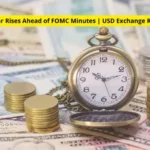Table of Contents
ToggleThe Forex market stands as the world’s largest and most liquid financial marketplace, attracting millions of traders who aim to profit from currency fluctuations. However, success in Forex trading is not merely about speculation or luck — it requires education, discipline, and a sound strategy. This comprehensive guide explores ten powerful tips for success in Forex trading that can help both beginners and experienced traders navigate the market with confidence.
1. Educate Yourself Thoroughly
One of the most crucial foundations for success in Forex trading is dedicating sufficient time to education. Before executing your first trade, you need to develop a solid understanding of how the foreign exchange market works, how currency pairs are structured, and which economic indicators influence price fluctuations. Jumping into live trading without this knowledge is equivalent to navigating unfamiliar terrain without a map.
Key areas you should explore include:
How currency pairs and quotes work: Learn the difference between base and quote currencies, what a pip is, how spreads affect your cost, and how major, minor, and exotic pairs behave differently.
The role of central banks and interest rates: Central banks like the Federal Reserve, ECB, or BOJ play a major role in currency valuation. Understanding how monetary policy and interest rate decisions impact a currency’s strength is essential for forecasting long-term trends.
The impact of geopolitical and economic events: Global events such as elections, wars, trade agreements, or economic sanctions can lead to sudden shifts in market sentiment. A trader who understands how to interpret news can better anticipate market moves.
Basics of technical and fundamental analysis: Technical analysis helps you read charts and identify patterns or trends, while fundamental analysis helps you evaluate economic data like inflation, employment, or GDP growth. Both are important tools for building a robust trading strategy.
Where to learn?
You don’t need a formal finance degree to become a skilled trader. There are countless learning resources available to beginners:
Online courses and structured programs on platforms like Udemy, Coursera, or broker academies.
Forex trading books that cover strategies, psychology, and risk management.
Webinars hosted by professional traders that offer insights and real-world examples.
Demo accounts where you can practice trading in real market conditions without risking real money.
Educational tools provided by regulated brokers, including video tutorials, articles, economic calendars, and market analysis.
Why education matters
A solid educational foundation doesn’t just help you understand how the market works — it also helps you manage risk, develop emotional discipline, and make informed decisions rather than gambling based on gut feeling. Traders who skip this step often fall into costly traps such as overtrading, revenge trading, or relying on unreliable signals.
Investing in your education may not deliver instant profits, but it will build the mindset and skills needed to grow sustainably over the long term. Remember, in Forex trading, knowledge is not optional — it’s your greatest asset.
2. Develop a Solid Trading Plan
Creating and sticking to a trading plan is one of the most overlooked yet vital components of long-term success in Forex trading. Many beginner traders enter the market with vague intentions, relying on instinct or emotions, which often leads to inconsistent results or heavy losses. A well-crafted trading plan, on the other hand, acts as a comprehensive roadmap — guiding every trading decision and helping you stay disciplined under pressure.
What should your trading plan include?
A proper trading plan isn’t just a set of random rules. It should be clear, structured, and tailored to your goals and personality. Key components of an effective trading plan include:
Clear entry and exit strategies: Define exactly what conditions must be met for you to open or close a trade. This could be a combination of indicators (e.g., moving averages, RSI, price action patterns), timeframes, or market structures. You should never enter a trade just because the market “feels right.”
Risk/reward ratios: Determine the minimum reward-to-risk ratio you’re willing to accept (e.g., 2:1 or 3:1). This helps ensure that your profitable trades outweigh the losses over time — even if your win rate is below 50%.
Position sizing rules: Know how much of your capital to allocate to each trade based on your risk tolerance. Proper position sizing protects your account from significant drawdowns and helps you stay in the game long enough to learn and grow.
Maximum acceptable loss limits: Set strict boundaries for how much you’re willing to lose per trade, per day, or per week. For example, a 1–2% risk per trade or a 5% max drawdown per day. This keeps emotions like revenge trading or overconfidence in check.
Specific setups and backtested strategies: List only those trade setups that you have tested and proven effective in demo or historical environments. Avoid chasing the latest trends or strategies without validation.
Why is a trading plan so important?
Having a plan creates structure and removes uncertainty. It reduces emotional decision-making, which is one of the main reasons traders fail. When you’re in a live market, fear, greed, and doubt can cloud your judgment — but if you have a written plan to follow, it becomes easier to stay objective.
Moreover, a trading plan enables performance tracking and improvement. By reviewing your trades against your plan, you can identify what works and what doesn’t, allowing you to refine your strategy over time.
Tips to follow your plan effectively:
Write it down: Don’t just keep your plan in your head — create a detailed document and refer to it before each trading session.
Review regularly: Markets evolve, and so should your plan. Set aside time weekly or monthly to analyze results and adjust strategies if necessary.
Avoid deviating during emotional moments: If you find yourself tempted to break the rules, step away from the screen. Discipline is built through consistency.
💡 Final Thought:
Think of your trading plan as your business blueprint. Just like a successful entrepreneur wouldn’t launch a company without a business plan, a professional trader wouldn’t enter the markets without a detailed trading strategy. It may take time and experience to develop a plan that fits you — but once you do, it becomes one of your most powerful tools for long-term success.
3. Use Risk Management Wisely
Another key tip for success in Forex trading is mastering the art of risk management. Many aspiring traders focus solely on strategies to maximize profit, but the reality is that preserving capital is even more important. In fact, professional traders know that consistent success comes not from winning every trade, but from limiting losses and letting the math of probability work in their favor over time.
What is risk management in Forex?
Risk management refers to the set of rules and practices that help you control potential losses and maintain financial stability, regardless of market conditions. Without it, even the best trading strategy can fail. Think of it as your financial defense system — it doesn’t guarantee you won’t lose, but it ensures that no single loss can wipe out your trading account.
Effective risk management practices include:
Risking only 1–2% of your capital per trade: This means if your account size is $10,000, you should not risk more than $100–$200 on any single trade. This approach allows you to survive losing streaks and keep trading long enough to recover.
Always using a stop-loss order: A stop-loss automatically closes your position at a predefined level, preventing you from taking uncontrolled losses. Never trade without one — hope is not a strategy.
Avoiding excessive leverage: While leverage can amplify gains, it can also magnify losses. Many retail traders blow their accounts by using too much leverage. Stay conservative and understand the true risks before using leverage.
Diversifying across uncorrelated currency pairs: Don’t put all your risk into one currency or similar correlated pairs (like EUR/USD and GBP/USD). Diversifying your positions reduces the chance of being hit hard by a single market move.
Setting a daily or weekly drawdown limit: In addition to per-trade limits, have an overall maximum loss you’re willing to accept for the day or week. This prevents emotional decision-making after multiple losses and encourages discipline.
Why is risk management essential for success?
Risk management is what keeps you in the game during volatile markets or inevitable losing streaks. Even the best traders have losing trades — the difference is that they lose small and win big. By minimizing the size and impact of your losses, you buy yourself more time and more opportunities to succeed in the long run.
It also helps with emotional control. Knowing you’ve limited your downside makes it easier to stick to your plan and avoid panic-based decisions. Emotional stability is often the hidden factor that separates consistent traders from those who burn out.
💡 Final Thought:
Among all the tips for success in Forex trading, risk management might be the most powerful — and the most ignored. While strategy and analysis determine when to enter the market, it’s your risk management that determines how long you stay in the game. Build your system with risk control at its core, and you’ll not only survive, but thrive in the world of Forex.
4. Stay Updated on Market News
Forex markets are highly sensitive to economic news and global events. One of the essential tips for success in Forex trading is staying informed and adjusting your strategies based on relevant developments.
Make it a habit to:
Check economic calendars daily
Follow central bank statements and policy decisions
Track geopolitical news that affects currency sentiment
Being aware of upcoming events allows you to avoid high-risk trades and capitalize on short-term volatility when appropriate.
5. Master Technical and Fundamental Analysis
A deep understanding of technical and fundamental analysis is non-negotiable for Forex traders. These tools form the backbone of successful trading strategies.
Technical analysis involves:
Reading price charts and patterns
Identifying support and resistance levels
Using indicators like RSI, MACD, and Bollinger Bands
Fundamental analysis requires:
Evaluating macroeconomic trends
Understanding GDP, employment data, and inflation
Assessing a country’s financial and political stability
Combining both types of analysis will give you a 360-degree view of the market and improve your trading decisions.
6. Manage Your Emotions
Emotional control is often the difference between success and failure. No list of tips for success in Forex trading is complete without highlighting the importance of psychology.
To manage your emotions effectively:
Stick to your trading plan, even after losses or wins
Avoid revenge trading
Don’t let greed push you into overtrading
Take regular breaks to reset and reflect
Successful traders remain calm, objective, and focused, regardless of market conditions.
7. Start Small and Scale Gradually
If you’re just starting out, begin with small positions or a demo account. One of the best tips for success in Forex trading for beginners is to prioritize learning over earning.
Beginner steps include:
Practicing with a demo account until consistent
Transitioning to a micro or cent account
Increasing trade size only after proven profitability
This conservative approach helps you build skills and confidence without exposing your capital to unnecessary risk.
8. Keep a Trading Journal
Keeping a trading journal is one of the most practical tips for success in Forex trading. It allows you to review and refine your strategies over time.
Your journal should include:
Date and time of each trade
Entry and exit points
Position size and outcome
Reasons behind the trade
Emotional state and lessons learned
Reviewing this data helps identify patterns, highlight mistakes, and track your progress objectively.
9. Choose the Right Broker
The right broker plays a crucial role in your trading experience. One of the overlooked tips for success in Forex trading is ensuring your broker is trustworthy and aligns with your trading needs.
Look for brokers that offer:
Regulation by a recognized authority (e.g., FCA, ASIC, CySEC)
Transparent pricing and tight spreads
Fast execution with minimal slippage
Reliable trading platforms like MetaTrader 4 or 5
Responsive customer support
Avoid brokers with unrealistic promises or unclear terms and conditions.
10. Keep Learning and Adapting
The Forex market is dynamic and ever-changing. To maintain your edge, one of the top tips for success in Forex trading is committing to lifelong learning.
Ways to continue developing:
Read updated trading books and blogs
Follow experienced traders and analysts
Attend webinars and live trading sessions
Test and optimize new strategies regularly
Adaptability and a growth mindset will ensure your strategies evolve alongside the market.
Final Thoughts
These ten tips for success in Forex trading form the foundation of a sustainable trading career. Whether you’re just beginning or seeking to improve your existing strategy, applying these principles consistently will help you manage risks, maximize opportunities, and grow your trading skills over time. Remember, Forex trading is a marathon, not a sprint — discipline, education, and patience are your greatest assets.
📚 Further Reading on Forex Trading
Looking to expand your trading knowledge? Check out these related articles to deepen your understanding and stay ahead in the Forex market:
🔍 US Dollar Rises Ahead of FOMC – What Traders Should Know: Stay informed on how economic events like the FOMC can impact currency movements and trading opportunities.
🛠️ Forex Trading Must-Have Tool – Boost Your Performance: Discover essential tools that can streamline your trading workflow and improve decision-making.
⚖️ Forex Brokers vs. Prop Firms – Which Is the Best Choice for You?: Not sure whether to go with a broker or a prop firm? This guide compares both to help you choose the right path.
For Traders stands out for its 48-hour payout promise and flexible evaluation models. Discover the full breakdown Read Full Review .



